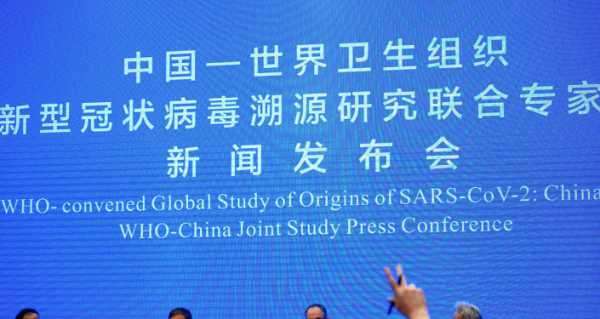
Since the COVID-19 outbreak began, China and its rivals have been locked in a battle over the origins of the virus, with the US in particular pushing a theory that it was a weapon engineered in a Wuhan lab. At first, transmission from hunted game seemed likely, but Beijing has also said the cold chain could have brought the virus from elsewhere.
The long-anticipated report from a World Health Organization (WHO) mission to China’s Wuhan has found that it’s “extremely unlikely” that SARS-CoV-2, the virus that causes COVID-19, escaped from a research lab. However, it also failed to firmly point the finger at animal-to-human transmission as well, which until now was the prevailing thesis.
The 12-nation team, which included Chinese scientists, also looked at direct zoonotic transmission to humans (possible-to-likely), introduction through an intermediate host followed by spillover (likely to very likely), and introduction through the cold food chain (possible). As Sputnik has previously reported, the lattermost field, which was raised by the Chinese government after it was proven that SARS-CoV-2 can survive in a deep freeze for significant amounts of time, was widely lambasted in the Western media, which instead pushed the lab escape theory, which has never had serious credibility.
Lab Escape Theory
In fact, the lab escape theory emerged from some media figures even before COVID-19 had reached a global pandemic phase, and by March 17, 2020, scientists had already sequenced the virus’ genome and found it impossible to have been engineered. Then-US President Donald Trump revived the conspiracy theory in May as the outbreak spiraled out of control and US deaths approached 100,000 people. Figures from his administration have continued to push the discredited theory, with former Centers for Disease Control and Prevention Director Robert Redfield making the claim just last week.
On Monday, WHO Director General Tedros Adhanom Ghebreyesus also urged continued follow-up on the lab escape thesis, due to the team’s inconclusive results.

(FILES) This file photo taken on April 17, 2020 shows an aerial view of the P4 laboratory at the Wuhan Institute of Virology in Wuhan in China’s central Hubei province
Animal Source Uncertain
Interestingly, the WHO report also failed to zero in on an animal source for the virus. An early and prevailing theory since the virus was discovered is that SARS-CoV-2 came from a species of bat that had been hunted and sold at the Huanan wet market in Wuhan, much as several prior coronaviruses that caused deadly outbreaks have.
The team’s animal and environment working group looked at a number of animals, including horseshoe bats and pangolins, and examined more than 80,000 wildlife, livestock and poultry samples from 31 Chinese provinces; none showed SARS-CoV-2 antibody or nucleic acid either before or after the SARS-CoV-2 outbreak in China. However, they did find that the Huanan market was highly contaminated, with 73 of 923 environmental samples from the market testing positive. That is perhaps unsurprising, since many early human cases came from the market.

A vendor holds Chinese yuan notes as a customer pays for lamb at a wet market almost a year after the global outbreak of the coronavirus disease (COVID-19) in Wuhan, Hubei province, China December 7, 2020
“There is evidence that some domesticated wildlife the products of which were sold in the market are susceptible to SARS-CoV, but none of the animal products sampled in the market tested positive in this study,” they noted. However, other samples from “upstream suppliers” of the market, as well as samples from other markets, did not reveal evidence of the virus circulating in animals.
Earlier Date for Outbreak
Their findings have also pushed back the data of the earliest known COVID-19 cases. Citing molecular sequence data, which they note “can be considered estimates,” the scientists suggest the outbreak might have started as early as late September 2019, but most estimates point to sometime between mid-November and mid-December, when the first definitive cases of a particularly harsh “flu” were noted in several Wuhan hospitals.
On Tuesday, the US and several of its closest allies issued a joint statement calling for “transparent and independent analysis and evaluation, free from interference and undue influence,” claiming the study was “significantly delayed and lacked access to complete, original data and samples.”
Sourse: sputniknews.com






